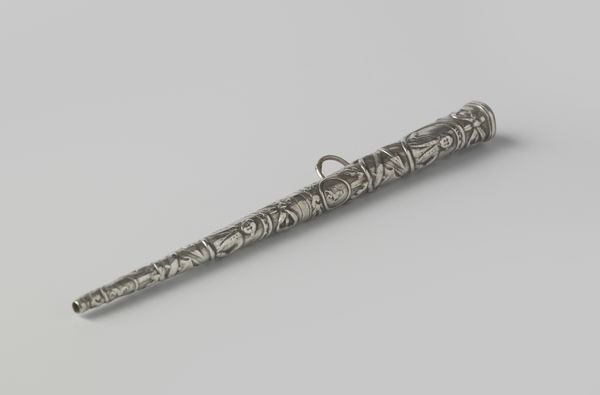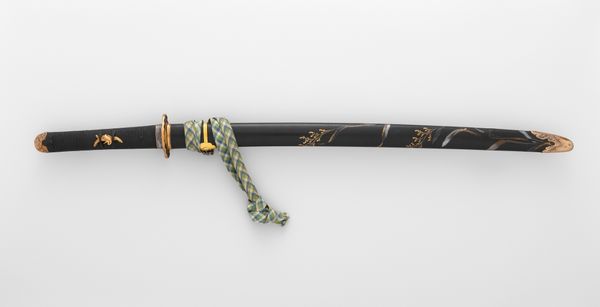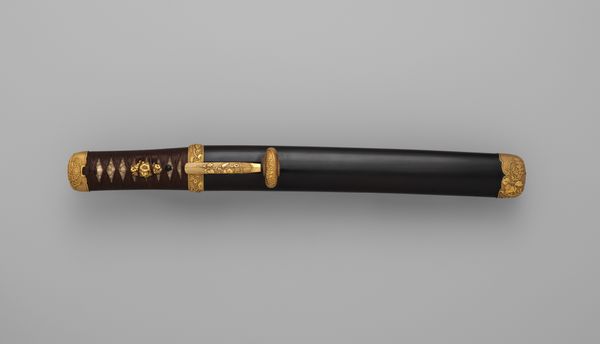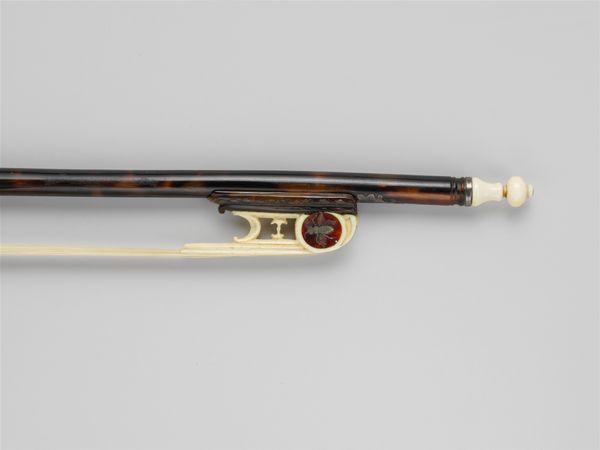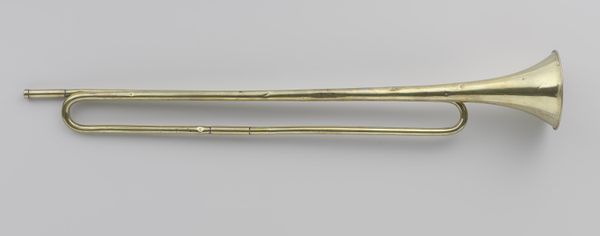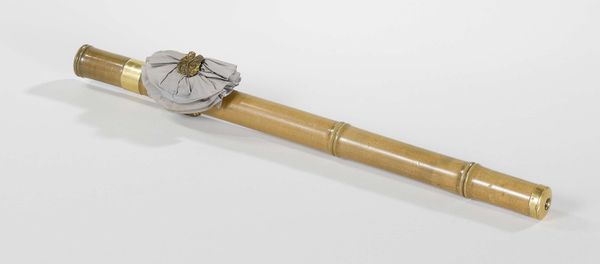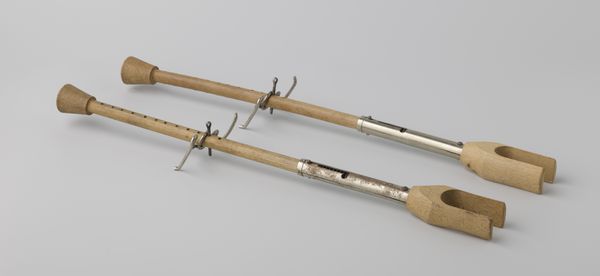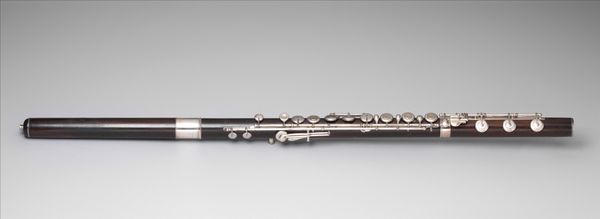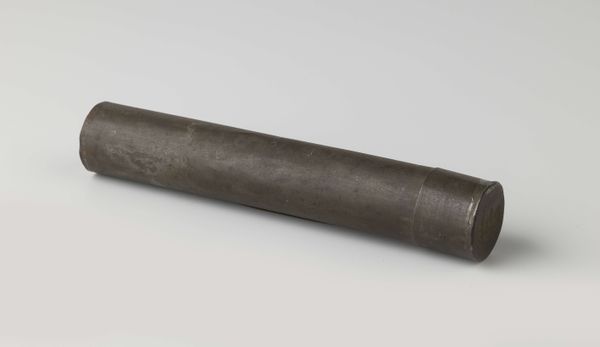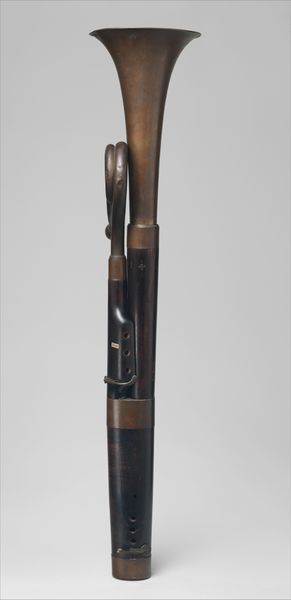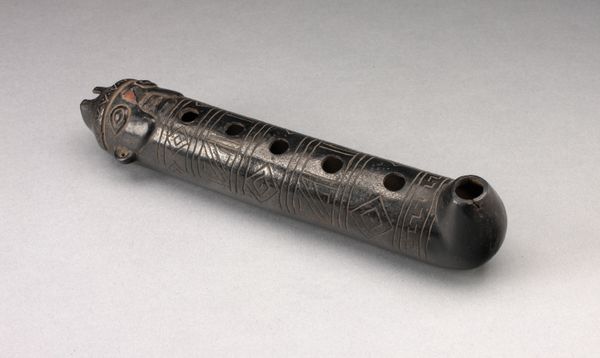
metal, wood
#
metal
#
asian-art
#
wood
Dimensions: length 54.5 cm, width 2.7 cm, length 4 cm
Copyright: Rijks Museum: Open Domain
Curator: Let’s turn our attention to this fascinating object: a pipe with its case, dating from around 1700 to 1740, currently residing here at the Rijksmuseum. Editor: My first thought is how surprisingly delicate it appears. The slender metal pipe juxtaposed with the ornate, almost coffin-like wooden case… It feels like a precious artifact, but also something strangely intimate. Curator: Indeed. Pipes like this weren't mere functional items; they signified status and refinement within certain social circles. The elongated form dictated a specific, performative manner of smoking, and these became incredibly popular across Asia and parts of Europe. Consider the rituals, the social contexts created around these practices. Editor: Precisely. And think about the labour invested! The contrast between the smooth, unadorned metal of the pipe and the wood case – look closer at the gold leaf inlay. Leaves and winding vines applied to the wood's surface are so meticulously done. And the construction of the case itself with that unusual hinge! The consumption becomes elevated by the artistry and toil involved in creating this object. Curator: That gilded botanical motif underscores your point, a real marker of sophistication in the period. It echoes the visual language of elite culture, associating smoking with leisure and taste. We see pipes appearing in portraits and genre scenes of the time, becoming part of the visual lexicon. Editor: It speaks volumes about global exchange, too. Asian craftsmanship shaping a habit taken up worldwide and adapted for local consumers. Who was responsible for its construction and what can it tell us about early trade networks? These are the kinds of questions I find truly intriguing about artifacts like this pipe. Curator: Absolutely. By studying these seemingly simple objects, we uncover layers of social practice and political implication, transforming what appears a mundane instrument into a symbol of power, exchange and global relations. Editor: In this moment, as the curators' remarks cease and this guide pauses, let's pause, consider and allow that what appears, is so often much more than first meets the eye, materially or intellectually.
Comments
No comments
Be the first to comment and join the conversation on the ultimate creative platform.

